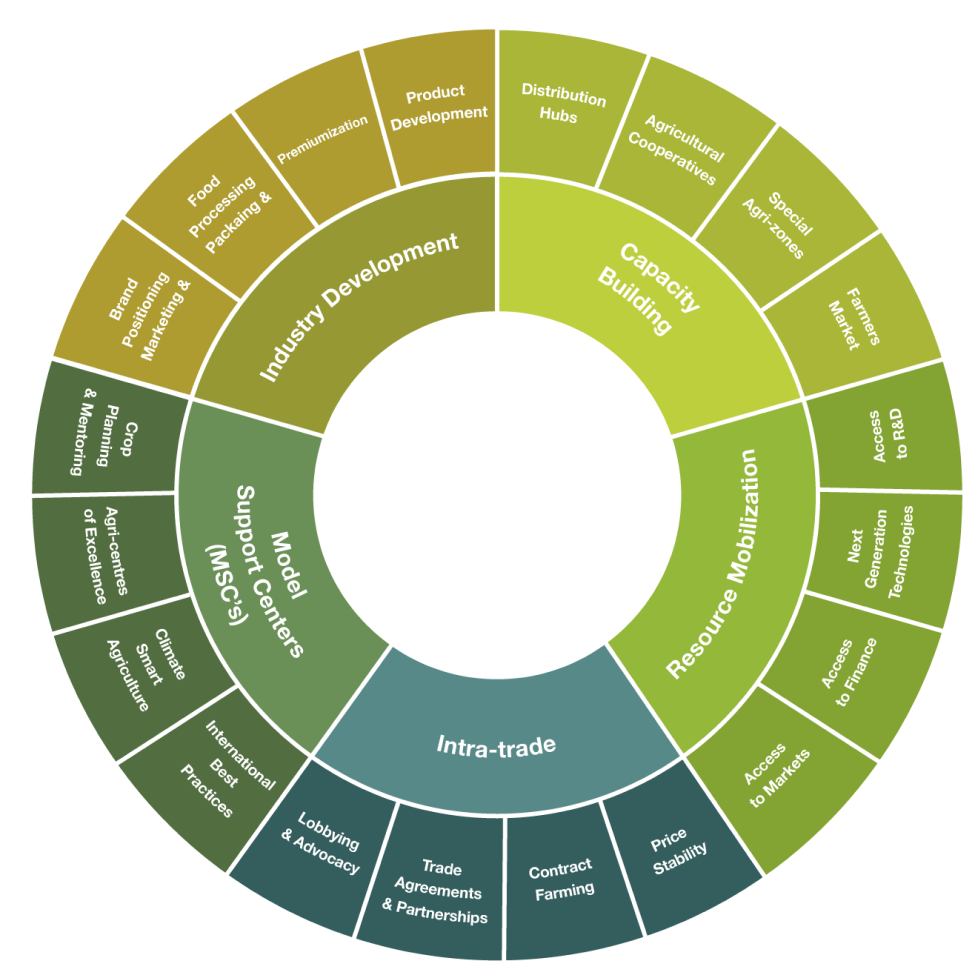Access to Market
Direct access to local and global markets, bypassing middlemen, empowers farmers, ensures fair compensation, and revitalizes rural economies.
Direct Market Channels
The strategic solution focuses on creating direct market access, breaking down barriers, and establishing transparent and fair market systems. Initiatives include digital marketplaces, cooperatives, education on market trends, and protective regulations. This approach boosts intra-trade and connects farmers directly to global consumers, fostering growth and self-sufficiency in OIC agriculture.
Transforming Market Access
Empowering Farmers
By emphasizing market access and transparency, this strategy dismantles the dominance of middlemen and establishes direct channels, giving farmers autonomy over their produce. Transparent markets ensure fair compensation, leading to thriving agribusinesses and revitalizing rural economies.
Limited access to local and global markets, exacerbated by middle agents, bureaucracy, and information gaps, hinders OIC farmers. This obstacle affects nations like Kazakhstan, forcing farmers to sell crops at lower prices, while middle agents profit from the lack of access.
The strategy emphasizes market access and transparency to transform the farmer-market relationship, eliminating middlemen dominance and enabling direct channels for farmers. Transparent markets ensure fair compensation, leading to empowered and dignified farmers and revitalized rural economies. Despite global interconnectedness, OIC countries' farmers face significant obstacles in accessing local and global markets due to middle agents, bureaucracy, and information gaps. This challenge affects nations like Kazakhstan, where farmers are compelled to sell crops at lower prices to middlemen, who profit from limited access.
The strategic solution involves creating direct market access, breaking barriers, and establishing fair systems through digital marketplaces, cooperatives, education, and regulations. This approach boosts intra-trade and connects farmers to global consumers, fostering growth and self-sufficiency in OIC agriculture.
A Look Into Access To Market
Objective Key Results (OKR) Methodology
This strategic approach ensures effective utilization of resources, promotes accountability, and facilitates the achievement of key objectives and measurable outcomes. Implementing the Objectives and Key Results (OKR) methodology within the context of IOFS's strategy can provide a structured approach to achieving its mission and objectives.
It emphasizes setting ambitious, yet achievable, objectives that drive meaningful impact. In the context of strategy implementation, this means identifying goals that align with the deliverables.
OKRs provide a structured approach to defining and communicating the objectives and desired outcomes of a PPP project.
Key Results are specific, measurable outcomes that help track progress toward the defined objectives involving quantifiable metrics such as completion of infrastructure projects on time, cost savings achieved through efficient operations.
This transparency builds trust and accountability, as progress is visible to both the public and private sectors. This accountability encourages collaboration and ensures that all parties remain committed to achieving the agreed-upon outcomes.
The OKR methodology encourages frequent reviews and adjustments of goals based on changing circumstances.
Regular reviews of OKRs provide opportunities to identify areas where adjustments or improvements are needed, fostering innovation in both service delivery and project execution.


Our Value Programs
Get in touch
Almukarramah team can’t wait to answer any questions you might have for Trade57!



